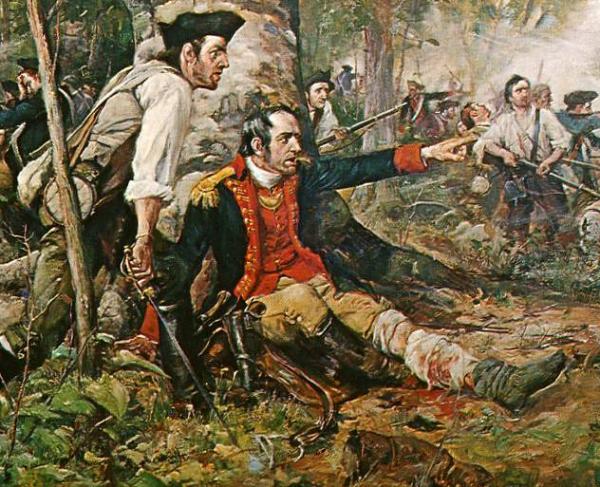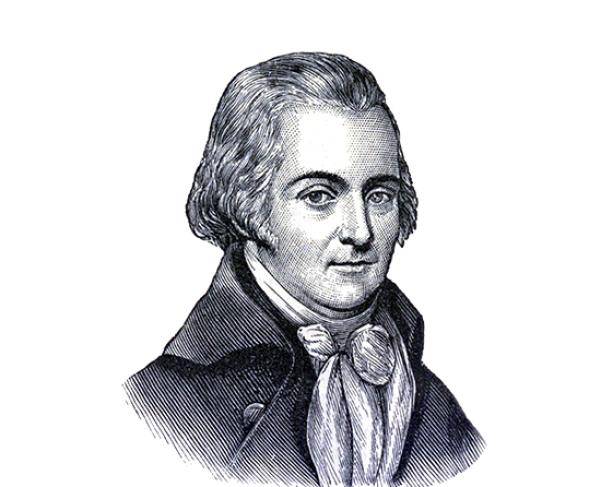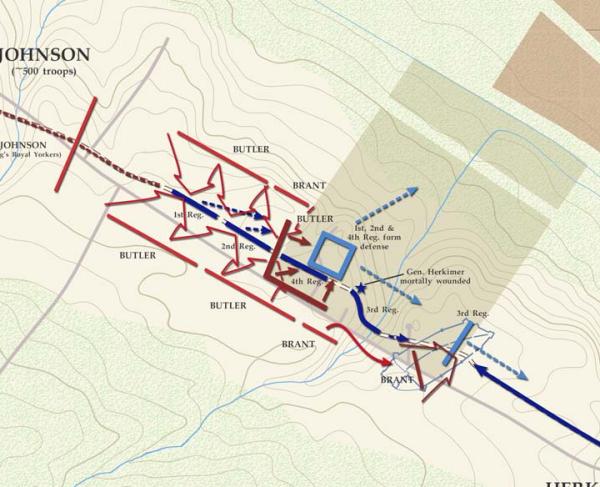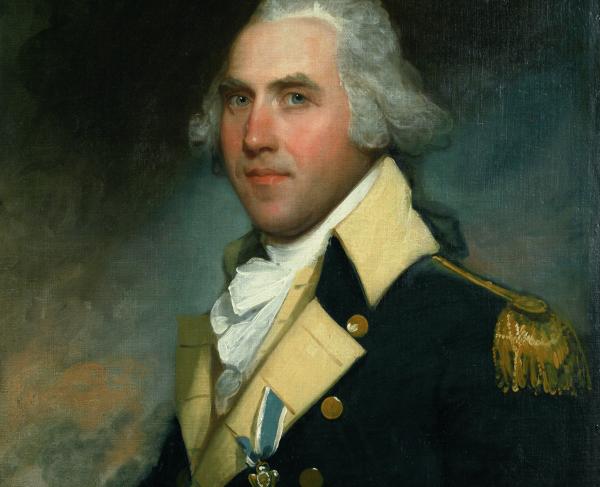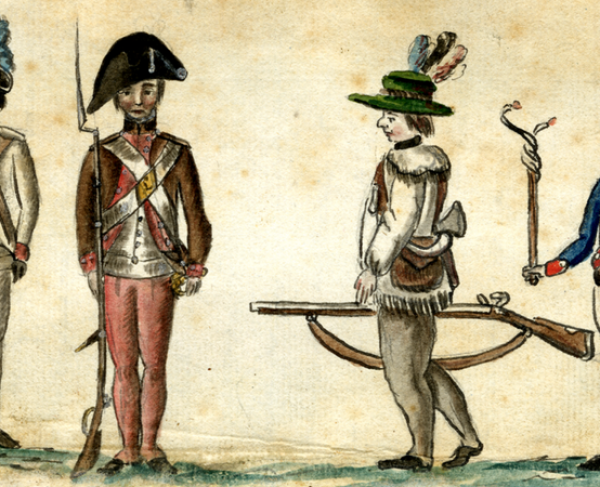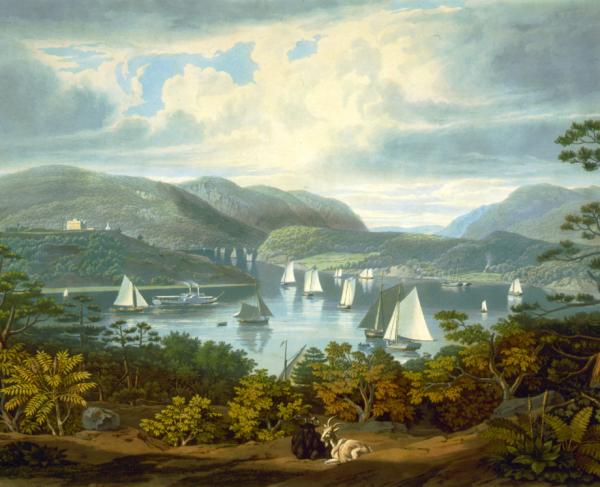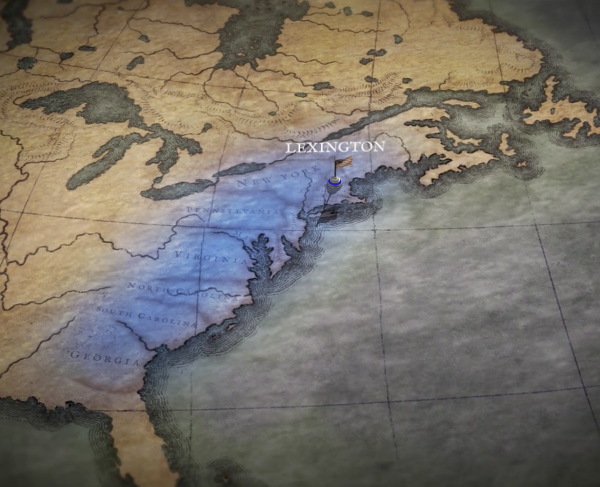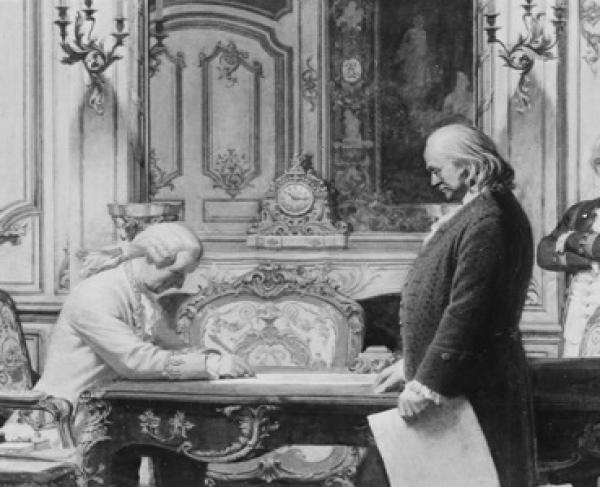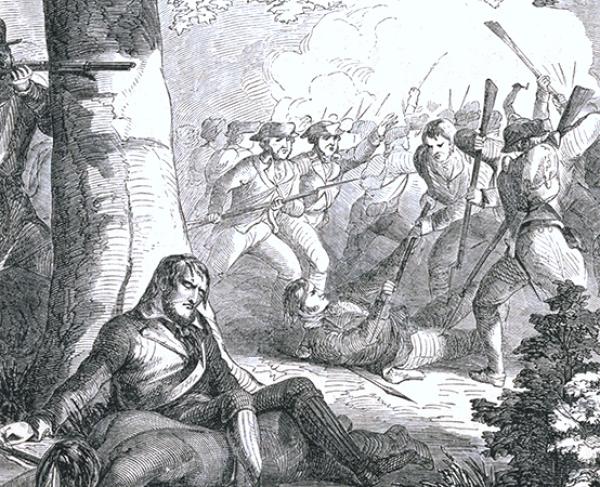
Oriskany
Oriskany, NY | Aug 6, 1777
On August 6, 1777, British forces under the command of Sir John Johnson engaged American forces under Nicholas Herkimer in the Battle of Oriskany, resulting in one of the few battles of the war where all the participants were North American.
How It Ended
Inconclusive. After being initially surprised by Native American warriors, Herkimer waged a stubborn defense, eventually compelling the British and their allies to abandon the fight and return to the lines around Fort Schuyler.
Context
In the summer of 1777, British forces under the command of John Burgoyne moved into the Hudson Valley to cut New England from the rest of the Thirteen Colonies. Burgoyne hoped to move through the valley and reach Albany. British Lieutenant Colonel Barry St. Leger was ordered to support this column by attacking Fort Stanwix in the Mohawk Valley.
On August 2, 1777, St. Leger arrived outside Fort Stanwix. In the meantime, American forces in the area were alerted to the British presence and began to dispatch troops to relieve the fort. General Nicholas Herkimer was the first to be selected to relieve the fort; with him were almost 800 militiamen and 60 Oneidas. Apprised of Herkimer’s column, St. Leger dispatched Sir John Johnson, Joseph Brant, and about 100 Loyalist light infantry, supplemented by about 400 Mohawks.
By August 6, Herkimer’s men were within a day’s march of the fort. He had hoped to send word to the American defenders and coordinate an attack, but the couriers were delayed. Herkimer decided to press on to the fort. Johnson planned to ambush the Americans six miles from the fort, in the dense undergrowth of a ravine, where the trail crossed a small stream. He and his Native allies designed the perfect ambush, with the Loyalists blocking the path and their Native American allies poised along either side.
At 10 a.m., the American column moved into the ravine, with Herkimer mounted near the front. Johnson wanted the Americans to run headlong into his Loyalists and have their Native American allies swoop in to decimate the column trapped in the ravine. Instead, some of the Native Americans at the rear of the American column opened fire preemptively. As a result, the portion of Herkimer’s men who were outside the ambush zone quickly fled. Herkimer himself was struck in the leg. His men laid him against a tree, but when they suggested he retire to the rear, he replied, “I will face the enemy,” and calmly sat, directing the brutally close and intense battle. A thunderstorm halted the fighting for nearly an hour, before the fighting resumed.
By 11 a.m., Herkimer’s messengers had reached the fort, and a supporting party was organized. When the thunderstorm passed, American Lieutenant Colonel Marinus Willett led 250 men out and proceeded to raid the unoccupied British camp. Growing tired of the fighting, Johnson’s Mohawks and then the light infantry eventually withdrew.
465
28
Herkimer and his men withdrew to Fort Dayton, where Herkimer’s shattered leg was amputated. He died of infection on August 16. By August 21, an American relief column lifted the siege of Fort Stanwix.
Built during the 1750s, Fort Stanwix was meant to protect British citizens along the frontier in upstate New York. The fort sat directly in the path of British Lieutenant Colonel Barry St. Leger’s route to Albany. St. Leger’s second in command, Sir John Johnson, with Native allies ambushed American General Nicholas Herkimer’s relief column, leading to the battle.
A thunderstorm developed after the initial fighting occurred, allowing Herkimer to consolidate his position. When the fighting began again, Herkimer managed to hold on and Johnson eventually withdrew.
Oriskany: Featured Resources
All battles of the Saratoga Campaign
Related Battles
800
500
465
28
